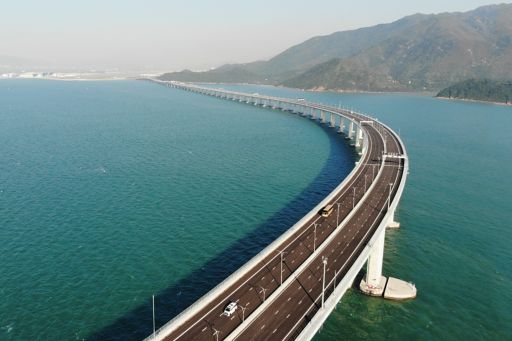Trend 3: The challenges of megaprojects are magnified
Trend 3: The challenges of megaprojects are magnified
As the realities of delivering megaprojects become clearer, new lessons and challenges are emerging.

Over the past few years, we have seen more megaprojects, of greater scale and complexity than ever before, being proposed and progressed. High-profile examples of the last year include the new bridge linking Hong Kong to Macau and Zhuhai, Thailand’s Eastern Economic Corridor, Australia’s Inland Rail project and the Dubai Solar Park (this is the world’s largest single-site solar installation to which more than US$4.3 billion of private investment has been committed).
As megaprojects become larger and more complex, new lessons and challenges are emerging. In particular, it has become clear that cross-border projects require unprecedented levels of collaboration between governments. Few governments are interested in having the rules of engagement dictated to them; everyone is looking for a win-win situation.
Over the past year, we have also seen continuing issues related to the politicization of megaprojects. In some markets, we have witnessed megaprojects being sacrificed on the political pyre as populist candidates turn existing projects into political platforms (Mexico’s new President recently halted a US$13 billion airport project that was already under construction). In other cases, fiscal prudence and concerns about project transparency have led to the cancellation of key endeavors.
Capacity is also rapidly becoming a challenge. The reality is that there are very few major domestic construction companies in any market with the size and experience to successfully deliver megaprojects. We are currently seeing this in Australia, where the country is investing in a huge portfolio of giant infrastructure projects, many valued at more than US$2 billion.
This means that some project owners are being forced to choose between paying more for a consortium of experienced local companies, taking a risk by accepting inexperienced players or bringing in foreign competitors; a difficult balance.
Perhaps not surprisingly, capability is also becoming a problem, particularly at the management level. Indeed, as projects become bigger and bigger, it is becoming increasingly difficult to find individuals with experience managing projects of such massive size and complexity.
As projects get bigger and more complex, they are becoming inherently more risky. That makes it increasingly difficult for project promoters to keep their nerve when things start to go wrong. In this environment, we expect to see project owners find a new thirst for benchmarking, analyzing performance and learning lessons from other successful projects globally as they seek to defend projects against political and financial pressures.
Our view is that, given all these constraints, we may be rapidly approaching the effective limits of project size and complexity.
Further reading:
- Emerging Trends in Infrastructure 2019
- Trend 1: The public sector begins to reassert its role
- Trend 2: Data drives operational efficiency
- Trend 4: Eyes shift to emerging
- Trend 5: Embracing the evidence
- Trend 6: Sustainability goes mainstream
- Trend 7: Progress trumps divisiveness
- Trend 8: Competition for new technologies heats up
- Trend 9: The customer becomes king
- Trend 10: Interdependence creates opportunities
- VIDEO: Emerging trends in infrastructure 2019


